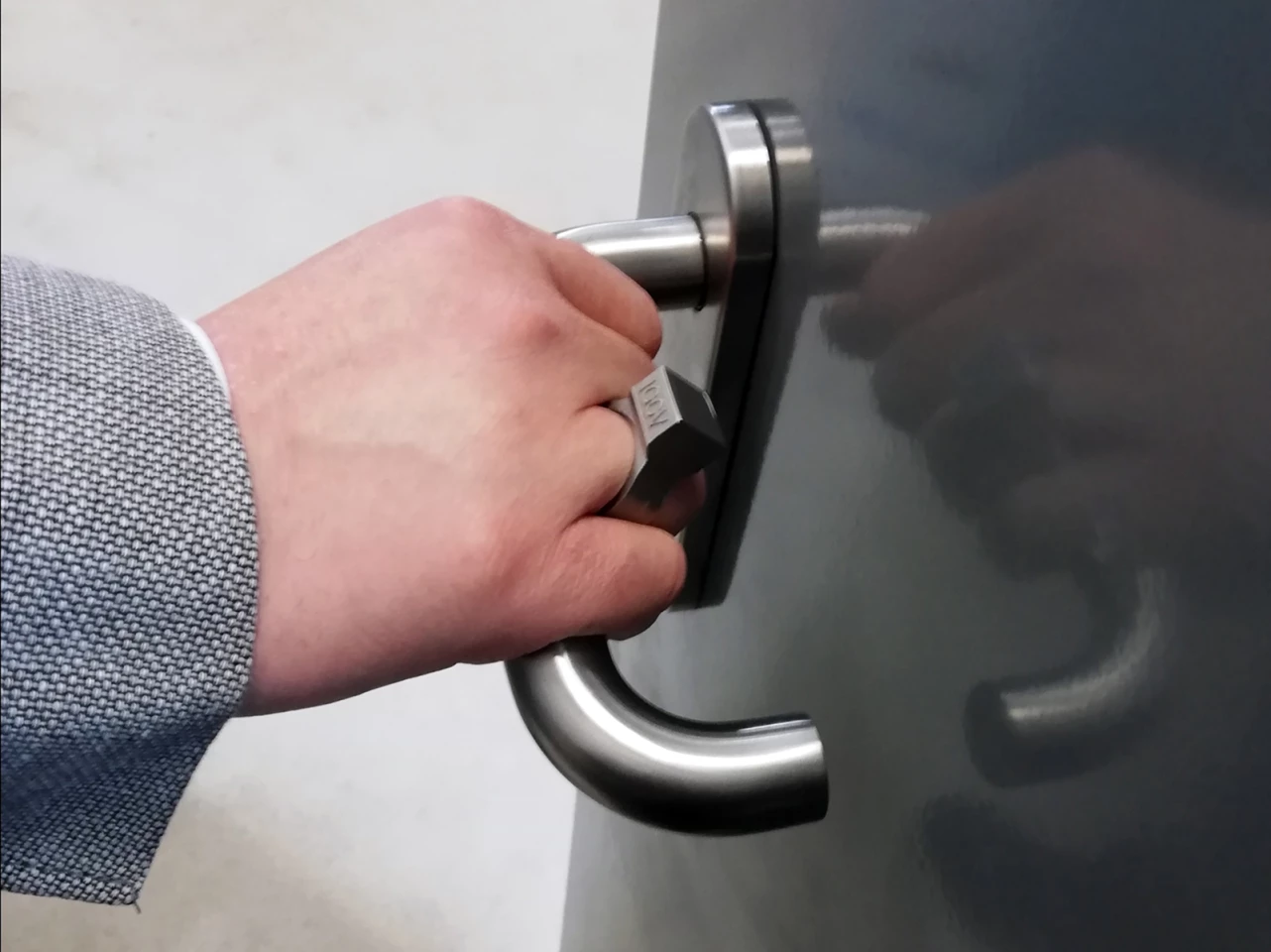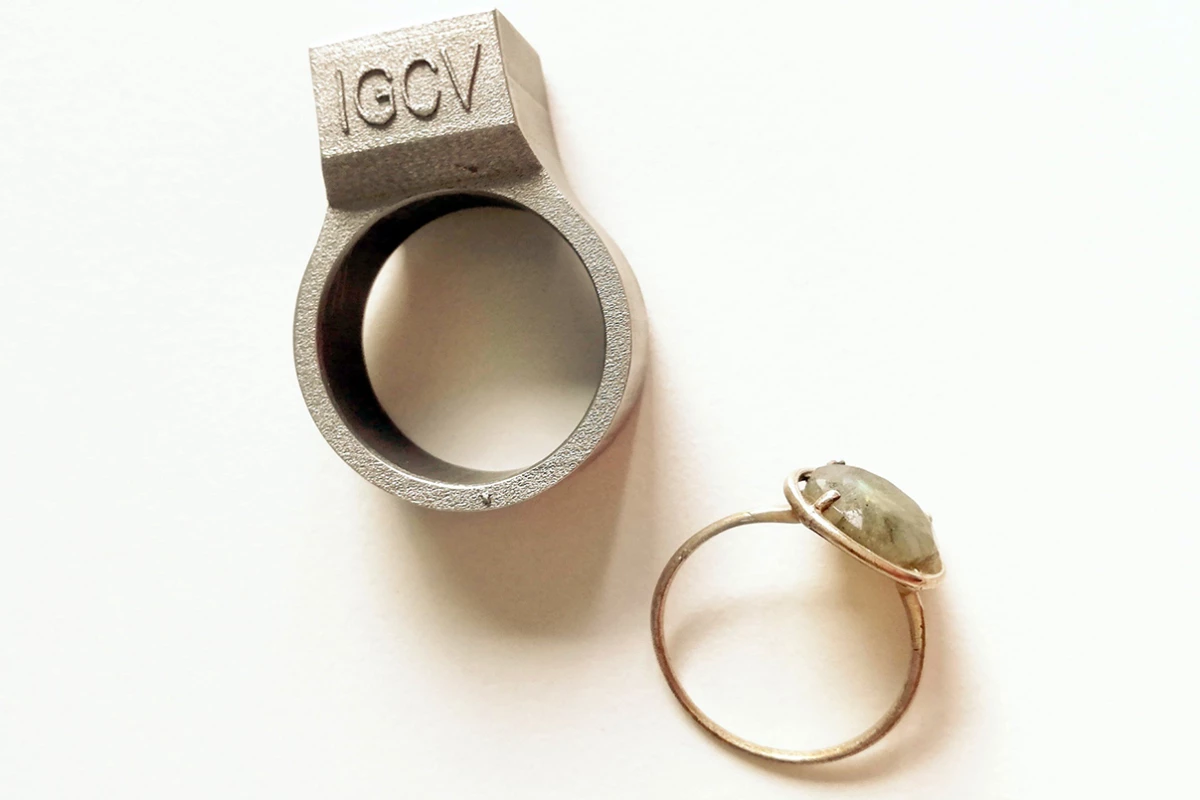It can be difficult, digging out your keys or wallet when your hands are full. Well, if an experimental new 3D-printed "smart ring" reaches production, such digging may no longer be necessary.
The metal ring is currently being developed by scientists from Germany's Fraunhofer Institute for Casting, Composite and Processing Technology, as part of the larger Kinematam project.
It contains a passive RFID (radio frequency identification) tag which gets wirelessly powered up by an electromagnetic pulse from a separate reader device. The tag proceeds to transmit a radio signal to that device, containing data such as a user-distinct passcode. Because the tag is powered as needed by the reader, it requires no onboard power source such as a battery.
The main body of the ring is printed in one tamperproof piece via a process in which a laser beam is used to selectively melt metal powder. As that powder melts in a predefined pattern, the metal particles fuse together, building the ring up one solid layer at a time.
During this process, a cavity is left inside of the ring. Before the print job is complete, it's paused in order to allow a robotic arm to insert the RFID tag into that cavity. The printing process then resumes, sealing the tag inside of the ring by printing a layer of metal over top of it.
Although materials such as metal can present a barrier to RFID signals, the layer over top of the ring's tag is just 1 millimeter thick, so it's not much of a problem.
Additionally, the tag transmits its data at a shorter-than-normal frequency of 125 kilohertz, allowing it to pass through the metal better than would be possible at a longer frequency. What's more, the walls of the cavity are designed to reflect the tag's radio waves outward, through the metal.

It is hoped that such smart rings (combined with onsite reader devices) could ultimately be used for tasks such as unlocking doors, paying for purchases, or even conveying vital medical information to first responders. The technology could also be used to manufacture "smart" devices other than rings, such as solid metal machine parts that transmit data on their operational parameters.
And if you like the RFID ring concept, you might want to check out the similar – and already-available – NFC Ring.
Source: Fraunhofer





